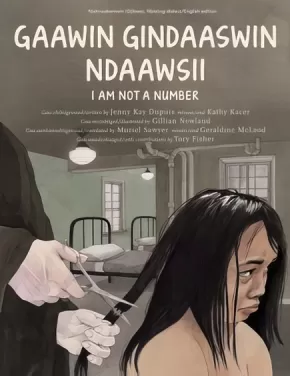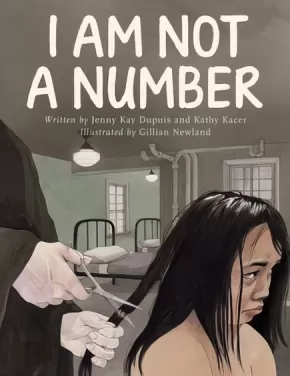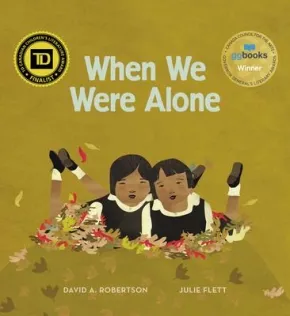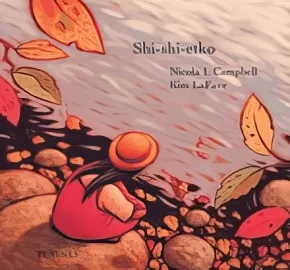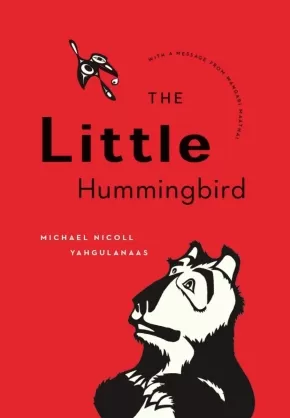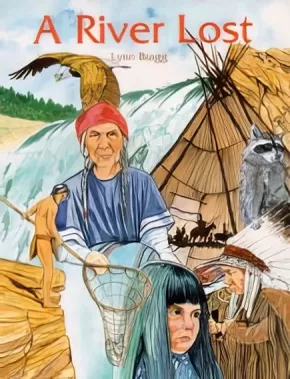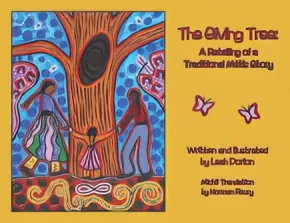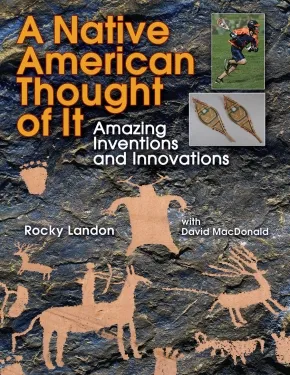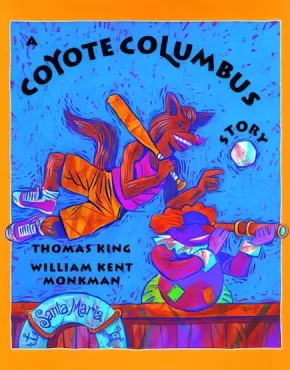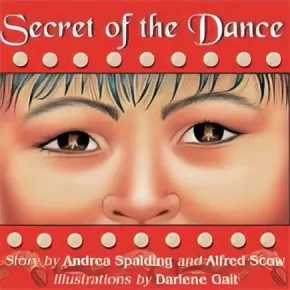
Thinking
1
-
11
of
11 Results;
Sort By
The thinking competency encompasses the knowledge, skills and processes we associate with intellectual development. It is through their competency as thinkers that students take subject-specific concepts and content and transform them into a new understanding. Thinking competence includes specific thinking skills as well as habits of mind, and metacognitive awareness.
Gaawin Gindaaswin Ndaawsii / I Am Not A Number
$14.95
Artists:
Format:
Paperback
Text Content Territories:
Indigenous Canadian; First Nations; Anishinaabeg; Ojibway;
ISBN / Barcode: 9781772600995
Synopsis:
Synopsis:
Dual language edition of powerful children's book about residential school experience reflects Indigenous language revitalization.
The dual language edition, in Nishnaabemwin (Ojibwe) Nbisiing dialect and English, of the award-winning I Am Not a Number. When eight-year-old Irene is removed from her First Nations family to live in a residential school she is confused, frightened, and terribly homesick. She tries to remember who she is and where she came from, despite the efforts of the nuns who are in charge at the school and who tell her that she is not to use her own name but instead use the number they have assigned to her. When she goes home for summer holidays, Irene's parents decide never to send her and her brothers away again. But where will they hide? And what will happen when her parents disobey the law? Based on the life of co-author Jenny Kay Dupuis’ grandmother, I Am Not a Number is a hugely necessary book that brings a terrible part of Canada’s history to light in a way that children can learn from and relate to.
Reviews
"Residential and boarding school stories are hard to read, but they're vitally important... books like I Am Not a Number should be taught in schools in Canada, and the U.S., too."— Debbie Reese, American Indians in Children's Literature
"It’s important to teach children about true Canadian history, but it’s not easy to talk about it in a way that children will understand. I Am Not a Number is perfect to get the conversation about residential schools started with your children. It opens the door for them to ask questions about the subject and the story is relatable in a way they can follow."— Residential School Magazine
Educator Information
Recommended Ages: 7-11
Guided Reading: V
Dual-language: Nishnaabemwin (Ojibwe) Nbisiing dialect and English.
Subjects: Character Education (Empathy, Prejudice & Tolerance); History & Social Studies (Canadian History, First Nations & Indigenous Peoples); Government & Citizenship; Reflecting Diversity
This resource is also available in English: I Am Not a Number.
This resource is also available in French: Je ne suis pas un numero.
Additional Information
44 pages | 8.50" x 11.00" | Translated by Muriel Sawyer and Geraldine McLeod with contributions by Tory Fisher
I Am Not a Number
$19.95
Artists:
Format:
Hardcover
Text Content Territories:
Indigenous Canadian; First Nations; Anishinaabeg; Ojibway;
ISBN / Barcode: 9781927583944
Synopsis:
Synopsis:
When eight-year-old Irene is removed from her First Nations family to live in a residential school she is confused, frightened, and terribly homesick. She tries to remember who she is and where she came from, despite the efforts of the nuns who are in charge at the school and who tell her that she is not to use her own name but instead use the number they have assigned to her. When she goes home for summer holidays, Irene's parents decide never to send her and her brothers away again. But where will they hide? And what will happen when her parents disobey the law? Based on the life of co-author Jenny Kay Dupuis’ grandmother, I Am Not a Number is a hugely necessary book that brings a terrible part of Canada’s history to light in a way that children can learn from and relate to.
Awards
- 2018 Red Cedar Award for Information Book Winner
- 2018 Hackmatack Award Winner
Reviews
"Residential and boarding school stories are hard to read, but they're vitally important... books like I Am Not a Number should be taught in schools in Canada, and the U.S., too."— Debbie Reese, American Indians in Children's Literature
"It’s important to teach children about true Canadian history, but it’s not easy to talk about it in a way that children will understand. I Am Not a Number is perfect to get the conversation about residential schools started with your children. It opens the door for them to ask questions about the subject and the story is relatable in a way they can follow."— Residential School Magazine
"[A] powerful teaching tool that brings a terrible part of Canada’s history to light in a way that children can learn from and relate to. It is written in simple language and told in a way that will stimulate conversations about residential schools and the traumatic effects they have had on generations of First Nation families and communities. ... beautifully illustrated by Gillian Newland. She captures the somber mood of the school, the anguish of the children, the severity of the nuns and the desperation of the family. Students can easily empathize with Irene and her brothers as well as their parents as they try to imagine how they would feel or act in a similar situation." — Alberta Native News, December 2016
"Endless cross-curricular connections can be made using this story. But the most powerful aspect of this book is that it will open a dialogue, one that Justice Murray Sinclair spoke of as head of the Truth and Reconciliation Commission, a dialogue that needs to take place for reconciliation to happen." — ETFO Voice
Educator Information
Recommended Ages: 7-11
Guided Reading: V
This resource is also available in a dual-language format (English and Nishnaabemwin (Ojibwe) Nbisiing dialect): Gaawin Gindaaswin Ndaawsii / I Am Not A Number.
This resource is also available in French: Je ne suis pas un numero
Additional Information
32 pages | 8.50" x 11.00"
When We Were Alone
$21.95
Artists:
Format:
Hardcover
Text Content Territories:
Indigenous Canadian; First Nations; Cree (Nehiyawak);
ISBN / Barcode: 9781553796732
Synopsis:
Synopsis:
When a young girl helps tend to her grandmother’s garden, she begins to notice things that make her curious. Why does her grandmother have long, braided hair and beautifully coloured clothing? Why does she speak another language and spend so much time with her family? As she asks her grandmother about these things, she is told about life in a residential school a long time ago, where all of these things were taken away. When We Were Alone is a story about a difficult time in history, and, ultimately, one of empowerment and strength.
Reviews
"When We Were Alone is rare. It is exquisite and stunning, for the power conveyed by the words Robertson wrote, and for the illustrations that Flett created. I highly recommend it." — Debbie Reese, American Indians in Children's Literature.
"…Robertson handles a delicate task here admirably well: explaining residential schools, that shameful legacy, and making them understandable to small children. It’s a dark history, and the author doesn’t disguise that, but he wisely focuses the grandmother’s tale on how, season by season, the students use creativity, imagination, and patience to retain their sense of identity. A beautifully quiet, bold strength arises from the continued refrain “When we were alone” and in how the children insisted on being themselves. Flett’s gorgeous, skillful illustrations have a flattened, faux naïve feel to them, like construction paper collage, a style that works perfectly with the story. She nicely contrasts the school’s dull browns and grays with the riotous colors surrounding Nókom and gets much expression from her simple silhouettes. Spare, poetic, and moving, this Cree heritage story makes a powerful impression." — Kirkus Reviews
"When We Were Alone addresses the topic of residential schools and, just as importantly, aspects of Cree culture and language. There is such gentleness about When We Were Alone that makes it an appropriate book for the even youngest of readers. Simply put, this is a much-needed book. Highly Recommended." — Dr. Kristen Ferguson, CM Magazine
"Robertson's text moves between the present and the past, the girl's questions and Nókom's memories, which deepen and intensify the quiet, powerful way she lives out her own culture, day by day, in the present. A beautifully rendered story of resisitance and love, this is made all the more luminous by Flett's art - not just by flashes of fuschsia or scarlet among ochre grasses, but by her precisely observed images of the compact bodies of the uniformed children, bowed beneath the weight of the scissors, or lovingly tending each other's hair. Highly recommended." — Deirdre Baker, Toronto Star
"When We Were Alone is a story about finding the strength to push forward when everything is against you. It follows a young girl asking her grandmother questions to learn more about her past. The grandmother shares her experience of a time when she was unable to make her own decisions and how she got through it." — The Dalai Lama Center
Educator Information
Recommended Grades: 3 and under.
Grades 10-11 BC English First Peoples resource for the unit First Steps - Exploring Residential School and Reconciliation through Children's Literature.
This book is also available in Swampy Cree syllabics and Roman orthography, as well as the original English: Ispík kákí péyakoyak/When We Were Alone
This resource is also available in French: Quand on etait seuls
Additional Information
24 pages | 8.50" x 7.50" | colour illustrations
Shi-shi-etko
$19.99
Artists:
Format:
Hardcover
Text Content Territories:
Indigenous Canadian;
ISBN / Barcode: 9780888996596
Synopsis:
Synopsis:
In just four days young Shi-shi-etko will have to leave her family and all that she knows to attend residential school.
She spends her last days at home treasuring the beauty of her world -- the dancing sunlight, the tall grass, each shiny rock, the tadpoles in the creek, her grandfather's paddle song. Her mother, father and grandmother, each in turn, share valuable teachings that they want her to remember. And so Shi-shi-etko carefully gathers her memories for safekeeping.
Richly hued illustrations complement this gently moving and poetic account of a child who finds solace all around her, even though she is on the verge of great loss -- a loss that native people have endured for generations because of the residential schools system.
This gentle story of a child on the verge of great loss was selected as the Aboriginal Children’s Book of the Year.
Awards
- Winner of the Anskohk Aboriginal Children's Book of the Year Award.
Educator Information
Recommended Grades: 1-10.
Curriculum Connections: Indigenous Studies, Visual Arts, Science, Health.
Recommended Authentic First Peoples resource K-9.
This illustrated children's story is recommended for English First Peoples Grades 10 for units pertaining to childhood through Indigenous writers' eyes and the exploration of residential schools and reconciliation through children's literature.
This book is available in French: Shi-shi-etko (French)
Additional Information
32 pages | 8.50" x 8.13"
The Little Hummingbird
$21.95
Artists:
Format:
Hardcover
Text Content Territories:
Indigenous Canadian; First Nations; Haida; Indigenous South American;
ISBN / Barcode: 9781553655336
Synopsis:
Synopsis:
This inspiring children's book -- a revised edition of the award-winning Flight of the Hummingbird -- is based on a South American Indigenous story about a courageous hummingbird who defies fear and expectations in her attempt to save the forest from fire. The illustrated story is supplemented by a natural and cultural history of hummingbirds, as well as an inspiring message from Nobel Peace Prize winner Wangari Maathai. The evocative artwork by internationally renowned Haida artist Michael Nicoll Yahgulanaas complements the optimistic tale that encourages everyone to take responsibility for their home and the planet.
Reviews
“This fable-like tale shows readers how one person can make a difference in everyday life… The illustrations are… beautifully representative of Native Haida art.”—School Library Journal
“A visually striking, dramatic book… An environmental parable it is, but could it not be a parable for life itself?”—The Globe and Mail
Educator Information
Recommended for ages 5+.
Based on a South American Indigenous story, The Little Hummingbird features:
- Stunning artwork in Michael Nicoll Yahgulanaas’ iconic style
- An inspiring afterword from Nobel Peace Prize winner Wangari Maathai
- Scientific and cultural facts about hummingbirds
Additional Information
32 pages | 6.75" x 10.00"
A River Lost
$11.95
Artists:
Format:
Paperback
Text Content Territories:
Indigenous American; Native American; Sinixt (Arrow Lakes);
ISBN / Barcode: 9780888393838
Synopsis:
Synopsis:
A River Lost is the familiar story of an ancient culture infringed upon and altered forever by modern technology. It is the story of how the construction of the Grand Coulee Dam led to the destruction of a way of life for members of the Arrow Lakes Tribe. Sinee mat and her great-grandmother Toopa tell the engaging story of life on the Columbia River, before and after the dam.
Additional Information
32 pages | 8.50" x 11.00"
The Giving Tree: A Retelling of a Traditional Métis Story
$17.50
Artists:
Format:
Paperback
Text Content Territories:
Indigenous Canadian; Métis;
ISBN / Barcode: 9780920915905
Synopsis:
Synopsis:
This charming story, richly steeped in Métis culture, focuses on the boyhood reminisces of Moushoom as her describes finding the "great giving tree" with his mother and father. The story emphasizes the Métis core values and beliefs including strength, kindness, courage, tolerance, honesty, respect, love, sharing, caring, balance, patience, and most of all, the important connection with the creator and Mother Earth.
Additional Information
50 Pages | 27.9 cm H x 21.5 cm W
A Native American Thought of It: Amazing Inventions and Innovations
$9.95
Format:
Paperback
Text Content Territories:
Indigenous American; Indigenous Canadian;
ISBN / Barcode: 9781554511549
Synopsis:
Synopsis:
Inventiveness and ingenuity from North America's First Nations.
Everyone knows that moccasins, canoes and toboggans were invented by the Aboriginal people of North America, but did you know that they also developed their own sign language, as well as syringe needles and a secret ingredient in soda pop?
Depending on where they lived, Aboriginal communities relied on their ingenuity to harness the resources available to them. Some groups, such as the Iroquois, were particularly skilled at growing and harvesting food. From them, we get corn and wild rice, as well as maple syrup.
Other groups, including the Sioux and Comanche of the plains, were exceptional hunters. Camouflage, fish hooks and decoys were all developed to make the task of catching animals easier. And even games-lacrosse, hockey and volleyball -- have Native American roots.
Other clever inventions and innovations include:
* Diapers
* Asphalt
* Megaphones
* Hair conditioner
* Surgical knives
* Sunscreen.
With descriptive photos and information-packed text, this book explores eight different categories in which the creativity of First Nations peoples from across the continent led to remarkable inventions and innovations, many of which are still in use today.
Educator & Series Information
This book is a part of the We Thought of It series, a series which takes readers on a fascinating journey across the world's second largest continent to discover how aspects of its culture have spread around the globe.
Additional Information
48 pages | 8.50" x 11.00"
A Coyote Columbus Story
$14.99
Artists:
Format:
Paperback
Text Content Territories:
Indigenous;
ISBN / Barcode: 9780888998309
Synopsis:
Synopsis:
A trickster named Coyote rules her world, until a funny-looking stranger named Columbus changes her plans. Unimpressed by the wealth of moose, turtles, and beavers in Coyote' s land, he' d rather figure out how to hunt human beings to sell back in Spain. Thomas King uses a bag of literary tricks to shatter the stereotypes surrounding Columbus' s voyages. In doing so, he invites children to laugh with him at the crazy antics of Coyote, who unwittingly allows Columbus to engineer the downfall of his human friends. William Kent Monkman's vibrant illustrations perfectly complement this amusing story with a message.
Educator Information
Recommended Ages: 5 to 8.
Curriculum Connections: Social Studies, Geography, Physical Education and Health
Additional Information
32 pages | 8.50" x 10.50"
The Inuit Thought of It: Amazing Arctic Innovations
$9.95
Format:
Paperback
Text Content Territories:
Indigenous Canadian; Inuit;
ISBN / Barcode: 9781554510870
Synopsis:
Synopsis:
Dazzling inventions from the far north.
Today's Arctic communities have all the comforts of modern living. Yet the Inuit survived in this harsh landscape for hundreds of years with nothing but the land and their own ingenuity. Join authors Alootook Ipellie and David MacDonald as they explore the amazing innovations of traditional Inuit and how their ideas continue to echo around the world.
Some inventions are still familiar to us: the one-person watercraft known as a kayak retains its Inuit name. Other innovations have been replaced by modern technology: slitted snow goggles protected Inuit eyes long before sunglasses arrived on the scene. And other ideas were surprisingly inspired: using human-shaped stone stacks (lnunnguat) to trick and trap caribou.
Many more Inuit innovations are explored here, including:
- Dog sleds
- Kids' stuff
- Shelter
- Food preservation
- Clothing
- Medicine.
In all, more than 40 Inuit items and ideas are showcased through dramatic photos and captivating language. From how these objects were made, to their impact on contemporary culture, The Inuit Thought of It is a remarkable catalog of Inuit invention.
Educator & Series Information
Recommended Ages: 10-12.
B.C. Science Supplementary Resource: Gr.3- Physical Science
B.C. Science Supplementary Resource Gr.4- Life Science
This book is a part of the We Thought of It series, a series which takes readers on a fascinating journey across the world's second largest continent to discover how aspects of its culture have spread around the globe.
Additional Information
32 pages | 8.50" x 11.00"
Secret of the Dance
$12.95
Artists:
Format:
Paperback
Text Content Territories:
Indigenous Canadian; First Nations; Kwakwaka'wakw (Kwakiutl); Kwicksutaineuk ;
ISBN / Barcode: 9781554691296
Synopsis:
Synopsis:
"Many years ago, when the world and I were younger, my family defied the government."
A boy will never forget witnessing a forbidden Potlatch. In 1935, a nine-year-old boy's family held a forbidden Potlatch in faraway Kingcome Inlet. Watl'kina slipped from his bed to bear witness. In the Big House masked figures danced by firelight to the beat of the drum. And there, he saw a figure he knew. Aboriginal elder Alfred Scow and award-winning author Andrea Spalding collaborate to tell the story, to tell the secret of the dance.
Educator Information
"This story tells of a time when potlatches, ceremonial dancing and the wearing of regalia and masks were forbidden by Canadian law. A young boy, based on Judge Alfred Scow's boyhood story, witnesses the last secret potlatch of this community before the threat of imprisonment caused them to stop dancing." - FNESC, "BC First Nations Land, Title, and Governance"
Additional Information
32 pages | 9.00" x 9.00"
Sort By

